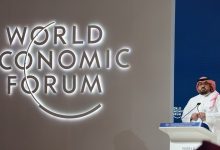
A drop in capital outflow has led to unprecedented growth in private banking, research shows
FILE PHOTO: The girl at the Italian supercar Ferrari F8 Tributo on the street of Moscow. © Sputnik / Sergey Pyatakov
More of Russia’s super-rich are keeping their money at home, driving “unprecedented” growth in the private banking sector, new research shows. The number of high-net-worth individuals (HNWI) holding assets worth over 100 million rubles (roughly $1 million) in Russian banks jumped by 50% last year compared to 2022, leading banking consultancy Frank RG reported on Tuesday.
The data was compiled as part of an annual private banking survey that aims to assess the quality of financial services offered to HNWIs in Russia. The consultancy recorded “unprecedented growth” in the private banking sector in 2023, Frank RG said in a statement.
“The inflow of ‘new money’ became the most significant driver of NHWI clients’ financial capital growth in Russia,” Lyubov Prokopova, project director at Premium & Private Banking, Frank RG, said in a statement.
The consultancy attributed the rise “mainly to the drop in the capital outflow” from Russia. The volume of cross-border transfers had dropped by 35% year-on-year, it noted, citing data from the country’s central bank. Higher interest rates on deposits have also attracted investment.
At the end of 2023, 29.4% of wealthy clients’ savings was held in foreign currency, while the remaining 70.6% was in rubles.
For the first time, analysts at Frank RG identified the very-high-net-worth individual (VHNWI) segment in Russia, referring to those whose assets exceed 500 million rubles ($5 million). At the end of 2023, the number stood at around 4,000 people, an increase of 60% year-on-year, the consultancy noted.
The total capital held by the super-rich in Russia amounted to the equivalent of over $145 billion in 2023, Frank RG said. The figure represents 62% growth from the previous year. However, wealthy Russians still hold around 60-65% of their assets outside of the country, the consultancy added.
READ MORE:
Russian economic growth hits 5.4%
In 2022, Russia was subjected to an unprecedented barrage of international sanctions over the Ukraine conflict. The measures have ranged from blacklisting most of the country’s banks and cutting them off from the SWIFT interbank messaging system, to freezing $300 billion in Russian foreign exchange reserves. The restrictions led to a 26% drop in the HNWI segment for that year.
Currently, the HNWI segment accounts for around 23% of Russia’s total financial capital – including money held in accounts and deposits, as well as assets held in the form of securities.




